The Sorrento Peninsula is one of the most beautiful and famous tourist destinations in Campania, a place shrouded in a romantic and magnetic aura like few others, difficult to describe without seeming obvious and redundant.
We will try to tell you everything about this magical location in our own way, revealing what you need to know and what you really can't miss during a holiday around the peninsula. There is no need to look for information elsewhere: you already are in the right place.

Sorrento Peninsula: a complete guide
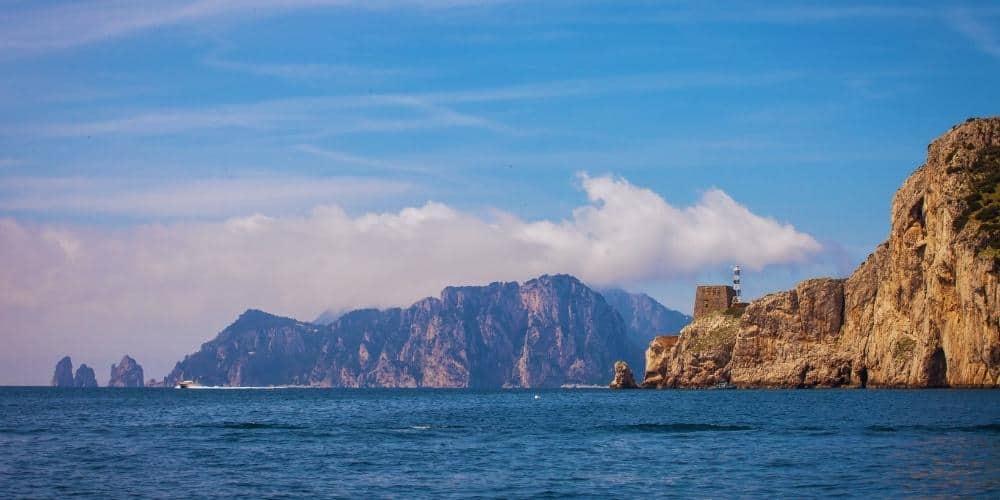
The Sorrento Peninsula is a territory in the province of Naples that stretches from Castellammare di Stabia to Positano, the famous UNESCO town that marks the beginning of the Amalfi Coast. Sheer cliffs and Mediterranean scrubland jutted out into the Tyrrhenian Sea, separating the gulfs of Naples and Salerno.
The ultra-flattering adjectives used when talking about this land are definitely fitting, and if you have already been there, you know what we are referring to. After all, it is no coincidence that the towns and landscapes of the Sorrento Peninsula have always been among the most popular destinations for travellers.
Villages overlooking the sea and competing for the most grammable shot; Blue Flag beaches; centuries-old traditions that are surprisingly up-to-date; a landscape that seems tailor-made for trekking; and the cuisine (food alone is worth the price of your stay). All this makes a trip to the Sorrento the perfect trip.
Here are some useful tips if you are drawing up your personal list of things to do in Italy on your next holiday. You are bout to include many of the spots we have rounded up.
What to see in the Sorrento Peninsula
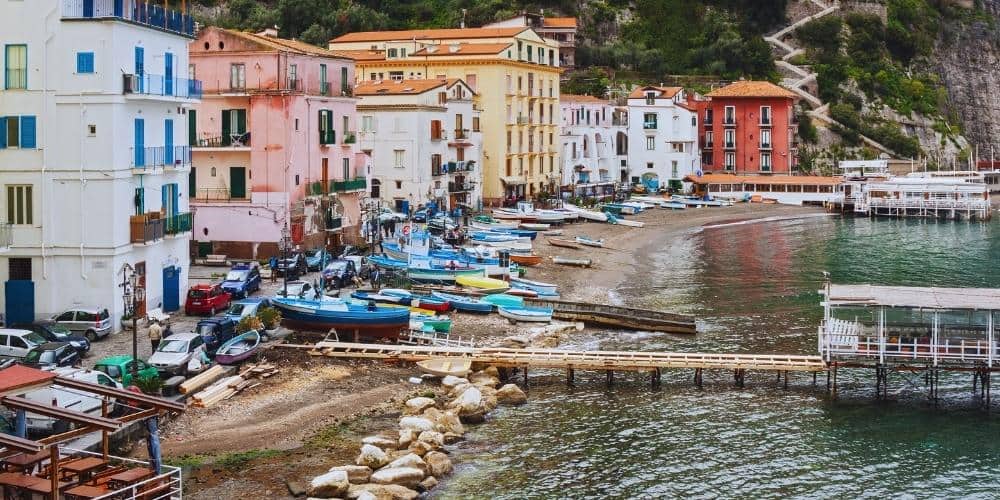
Each town is like a classic movie destination with a unique story to tell and ready to show off in front of your camera lens. Try, for example, to sort out your holiday following an ideal photographic itinerary covering the must-see spots of the Sorrento Peninsula.
Starting with Castellammare di Stabia and its precious archaeological excavations; the delightful Massa Lubrense and the fraction of Sant'Agata sui Due Golfi, with the Church of Santa Maria delle Grazie and the Monastery; Meta, a small but lively sun-baked village.
What to see in Sorrento
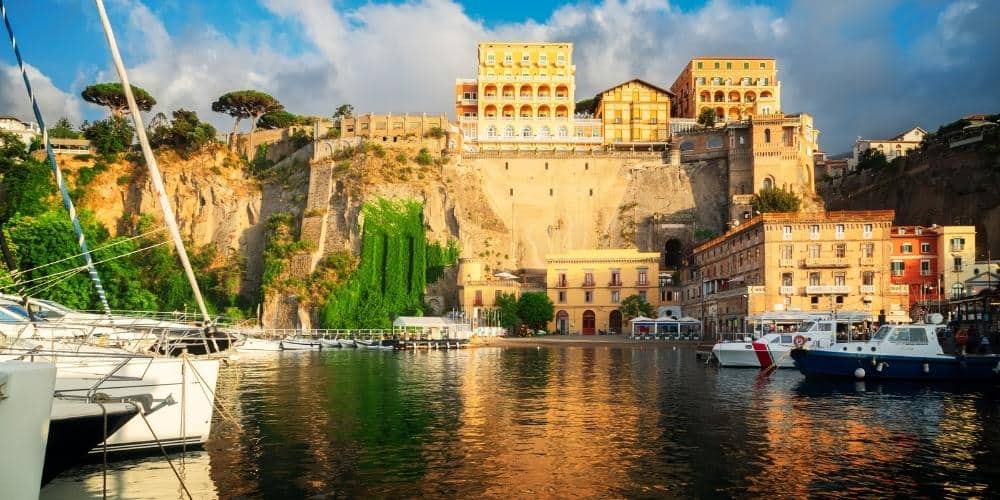
Sorrento is a must-see destination in every Italian summer. For centuries it has fascinated artists, poets and writers with its historic buildings and emblematic monuments, such as the Basilica of Sant’Antonino and the Cattedrale di San Filippo e San Giacomo. Right next to the cathedral begins one of the ancientest streets in Sorrento, Via Santa Maria della Pietà, from which wind many alleys full of shops and boutiques where you can buy typical products.
Looking out from the panoramic balcony of Piazza Tasso and indulging in a shopping session along Corso Italia are a must for every visitor.
Also in Piazza Tasso, lean out from the railing of Via Fuorimura: there is a thrilling view on the Vallone dei Mulini, with the ruins of a 17th-century mill. The valley, a sort of proto-industrial area abandoned in the second half of the 19th century, boasts an exceptional microclimate that has allowed the proliferation of unique and rare plants.
Following Via San Cesareo, the main Roman decumanus once home to local nobility, you'll arrive at Sedil Dominova, the only remaining seat of an ancient administrative institution in Campania. Continue along Via Reginaldo Giuliani to the Church of San Francesco, with its 14th-century cloister, and the Villa Comunale, featuring the magnificent selfie-backdrop offered by the Gulf of Naples. From the Villa Comunale, you can continue to the port and bathing establishments of Marina Piccola or head towards Piazza Vittoria.
Entering the ancient Porta Greca, you reach Marina Grande, a timeless place famous for being the set of Scandal in Sorrento, starring Vittorio De Sica and Sophia Loren. If you've seen the film, try to recognise the iconic movie locations, signs will help you identify them. Then stop by the Correale Museum, which will amaze you with its rich 17th and 18th-century minor arts collection.
If you want to soak up as much as possible of the local culture and thus have a truly authentic travel experience, you should constantly interact with the locals and get advice from those who can call such places home. And in case you fancy a real "bath in history", the natural pools known as Bagni della Regina Giovanna (Queen Joan Baths) will be a pleasant surprise.
To get there, you have to reach Punta Capo, about half an hour from the city centre. The rocky inlet is a wild place where nature is still the absolute protagonist, and therefore there are no refreshment facilities. The name is a tribute to Joanna II of Anjou-Durazzo, who, during her stay in Salerno, used to spend her leisure time diving in these waters in the company of young lovers.
What to see in Vico Equense
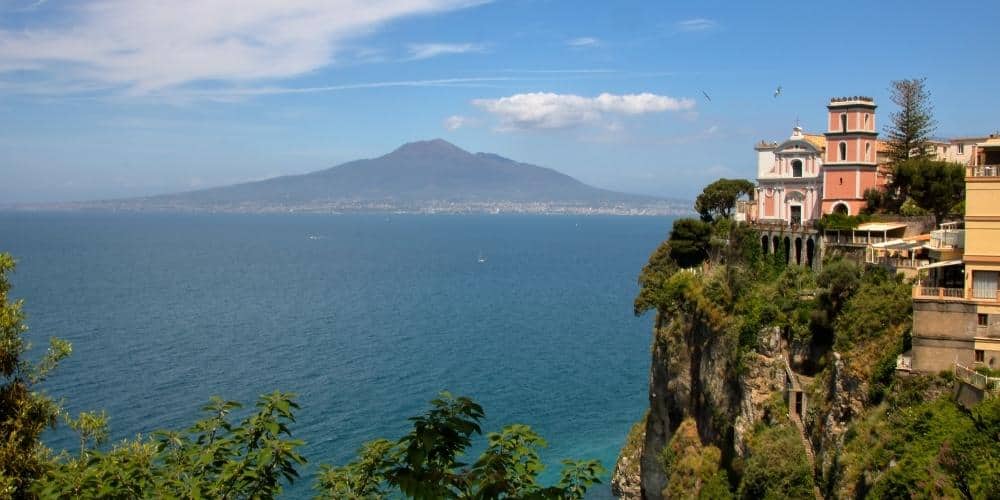
Vico Equense, the largest town on the Sorrento Peninsula, awaits you with the storied church of Santa Maria Annunziata poised on a vertiginous cliff overlooking the sea. Call in at the 13th-century Giusso castle, with its beautiful frescoed rooms and palatine chapel; take a dip in the Terme di Scrajo and the Banco di Santa Croce, one of the best diving spots in the Mediterranean.
Its sixteen small, charming hamlets offer a varied cross-section of what the area has to offer, including fantastic hiking routes through lush timbered landscapes, wonderful Blue Flag beaches, and a challenging "food panorama". The right place for living a holiday for all tastes.
What to see in Piano di Sorrento
High tuff cliffs, gardens overlooking the sea and all the warmth of a fishing village kissed by the sun in a delightful climate for most of the year. A ten-minute drive from Sorrento, Piano di Sorrento is wrapped in lush vegetation, with the chestnut trees of the Selva di Santa Caterina and forests of beech and oak trees scattered throughout the area.
Visit Villa Fondi De Sangro, the historic building that houses the Georges Vallet Archaeological Museum of the Sorrentine Peninsula. Its location is a dream, being on a panoramic terrace overlooking the small harbour and surrounded by citrus trees, olive trees and exotic plants.
Other sights include the neoclassical Villa Lauro, the Colonna Castle, a 19th-century structure built on the ancient ruins of the Abbey of San Pietro and Cermenna, the churches of the Holy Trinity, the Chiesa della Misericordia and the Basilica of San Michele Arcangelo.
What to see in Meta
Looking for a relaxing holiday? In Meta you can stay a few steps away from the beaches, the widest of the Sorrento Peninsula. Like many other towns in the area, Meta comprises an upper hamlet, Mulino, and a lower part, Casale, which includes the districts closest to the sea. Stroll through the alleyways of this small seaside village and immerse yourself in its genuine holiday atmosphere.
Take note of the historic residences, such as Palazzo Fienga, Villa Liguori, Palazzo Maresca, Villa Valletta Martini, and especially Palazzo Cosenza, a neoclassical building by Luigi Vanvitelli and chosen by Dino Risi for some scenes of Scandal in Sorrento.
Pay attention to the Vesuvian stone entrances of the houses, from which characteristic inner courtyards peep out. Visit the Basilica di Santa Maria del Lauro, patron saint of sailors, the Chiesa dell' Assunta, and the Cappella degli Angeli Custodi.
What to see in Sant'Agnello
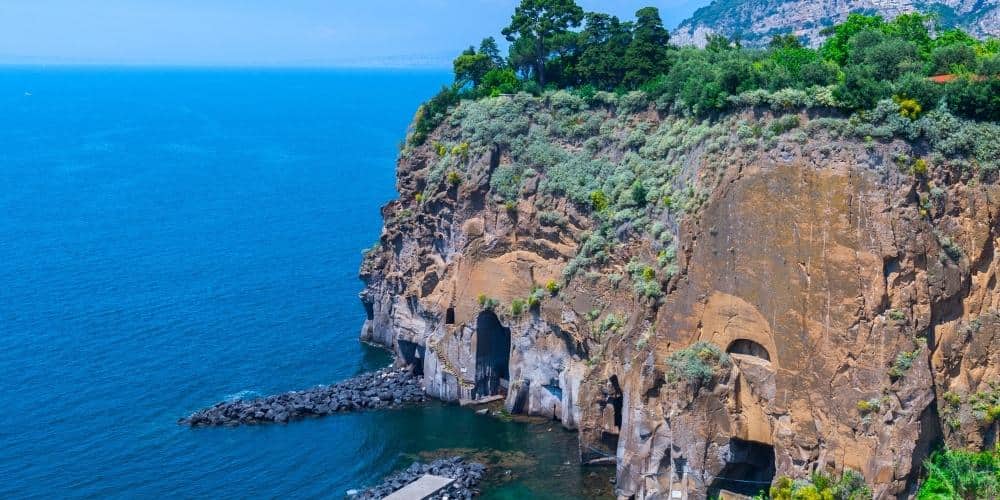
Sant'Agnello is the smallest municipality in the Sorrento peninsula and, actually, one of the smallest in Campania (about 9 thousand inhabitants for 4 square km). You encounter the town immediately before Sorrento, easily reachable in a twenty-minute walk. Like the other nearby borghi, Stant'Agnello stands on a high cliff sliding straight and dizzyingly into the Tyrrhenian Sea and boasts a splendid panoramic view of Vesuvius and the Sorrento coast.
Cocumella is among the top highlights. The 16th-century property is on the list of the Historical Places of Italy and has hosted famous travellers such as Goethe, Byron, Andersen and the Duke of Wellington. Villa Crawford, the medieval-like residence of American writer Francis Marion Crawford, is one of Sant'Agnello's best-known buildings and has long been a landmark of the local cultural scene.
Piazza Matteotti and Piazza Sant'Agnello from the centre of the town, which is pleasant to visit along with the Angri, Cappuccini and Maiano districts. Walk along Via Dei Pini until you come across the impressive view of the Golfo del Pecoriello. Then visit the Chiesa dei Frati Cappuccini and the church of Santi Prisco e Agnello.
What to see in Massa Lubrense

It may be less glamorous than Capri and Sorrento, but Massa Lubrense is one of the most exciting destinations to watch out for. Kilometres of coast entirely included in the Protected Marine Area of Punta Campanella, jewel-like beaches such as Jeranto and Mortelle bays, over 100 kilometres of footpaths, a gastronomic scene recognised globally for its originality and quality, and many points of historical and cultural interest, from the 16th-century cathedral to the Saracen watchtowers that jut out from the coast.
The territory of Massa Lubrense also takes in the hamlets of Nerano and Sant'Agata sui Due Golfi. The latter includes the Monastery of the "Deserto", named after the hill on which it stands. The viewpoint on the slope was a magnet for those on the Grand Tour; Nietzche, Wagner, and Stendhal all passed through here.
Beaches, coves and inlets are of course an irresistible attraction, places like the Fiordo di Crapolla, Recommone, Marina del Cantone, Cala di Mitigliano, Baia delle Sirene, Marina della Lobra and Marina di Puolo.
The most beautiful beaches of the Sorrento Peninsula
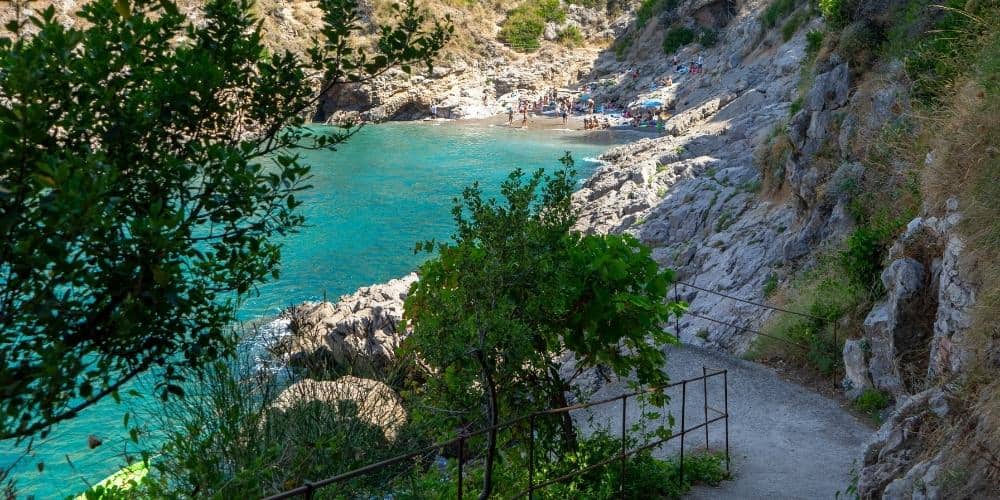
Some of the most stunning beaches in Italy slink along the Sorrento Peninsula. Coves and inlets are sometimes not easy to reach, but we can assure you that you won't feel fatigued when facing such routes since you will be distracted by the exquisite landscape.
The Baia di Ieranto, for example, can be reached walking a beautiful and challenging 6 km path through olive trees and fragrant citrus groves. It starts in Nerano and arrives at the very end of the Amalfi Coast. The bay is a protected marine area and overlooks Capri. The Fiordo di Crapolla, a narrow inlet between Recommone and Punta Taschiero, can also be reached by sea from Nerano. Alternatively, there is a route departing from S. Agata sui due Golfi.
You have the same options, boat trip or panoramic path, to get to Recommone Beach, 65 metres of small, light-coloured pebbles and caves carved into the rock. The Spiaggia della Tartaruga (Turtle Beach), on the other hand, is a wild corner where you can dive into the Blue Flag sea of Vico Equense.
Boat tours of the most famous beaches

Try a full immersion in the enchanting waters of the Sorrento Peninsula with a boat tour that takes you to the most evocative beaches and scenic spots.
Places like Marina Grande, Sorrento's fishing village, and the charming port of Marina Piccola; Cala di Puolo and Cala di Mitigliano, both in Massa Lubrense, a natural "aquarium" perfect for snorkelling; and the famous Bagni della Regina Giovanna, a gorgeous wild swimming pool a stone's throw from the area's oldest archaeological site, the Villa of Pollio Felice.
What to eat in the Sorrento Peninsula
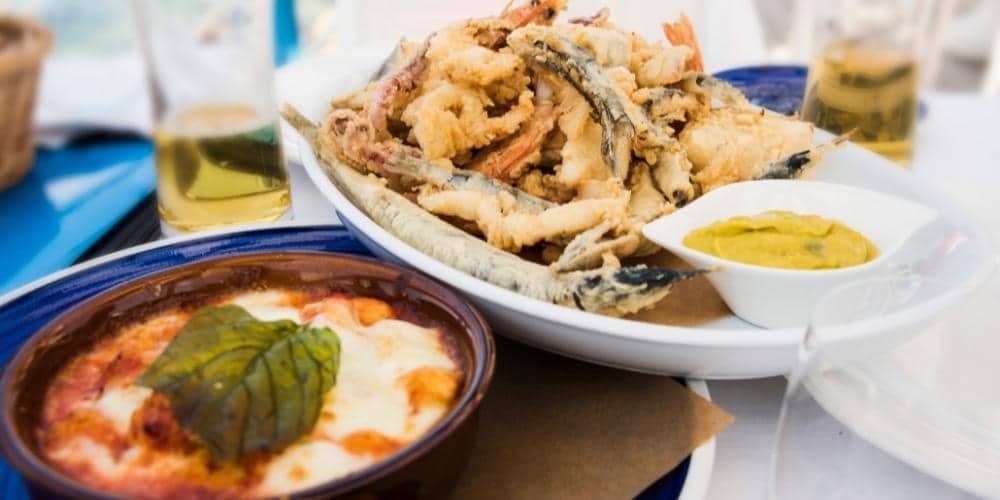
From great traditional classics to the most audacious dishes that make the region a cult destination for refined gastronomy lovers: a complete experience in (and around) Sorrento should cover the food universe.
The peninsula is an emotional and culturally vibrant centre. Festivals and fairs coexist with ease with Michelin star restaurants. The flavours of Sorrento cuisine are renowned everywhere and part of the charm of its towns and small villages that inspire delicious recipes, like spaghetti alla Nerano or gnocchi alla sorrentina. A delight for the taste buds.
Typical products of the Sorrento Peninsula
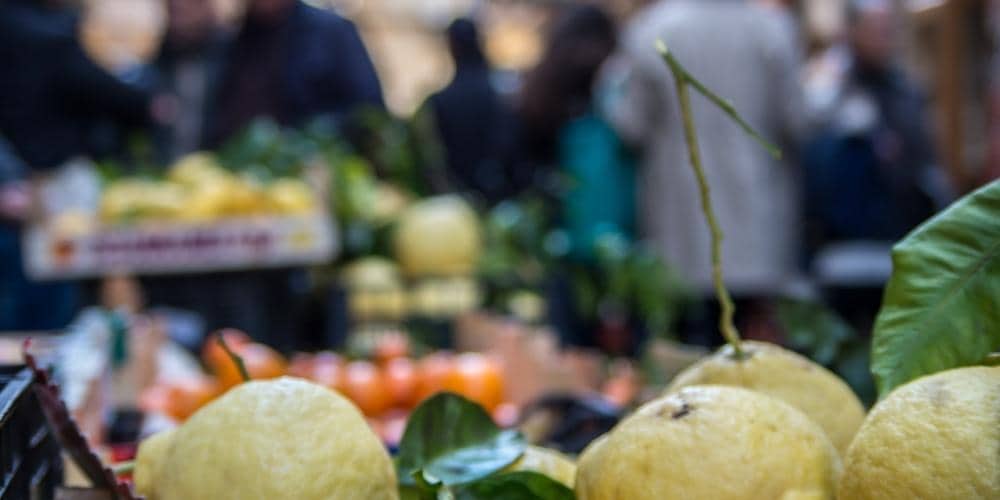
Dairy products like caciocavallo, fiordilatte and provola abound. Also, try Provolone del Monaco and mozzarella typical of Agerola. Fragrant lemons are obviously everywhere, used to make limoncello and sugar-bomb cakes (try the delizia al limone, a dessert so soft and creamy that you won't want to stop eating it).
Walnuts from Mount Faito are the main ingredient of Nocillo, a much loved local liqueur. Thirsty? Toast with lots of red wine from Gragnano, a town also renowned for its pasta manufacturers. And if you're in the mood for some effortless snack, bite into pizza a metro, a delicious speciality of Vico Equense.
Film Festivals

The Sorrento Peninsula has been successfully inspiring art since forever ago. Homer described it as the land of the Sirens and intellectuals involved in the 19th-century Grand Tours found here a precious retreat. Sorrento has been the subject of songs and films that have further increased its already enormous fame in more recent times.
Particularly prolific is the bond with cinematic art that has led to successful festivals animating the peninsula and the surrounding areas: the Capri, Hollywood International Festival; the Giffoni Film Festival, a kermesse dedicated to children's cinema held in the town near Salerno; and the Social World Film Festival in Vico Equense, an exiting one-of-a-kind event.
Family holidays: what to do with children in Sorrento and the peninsula
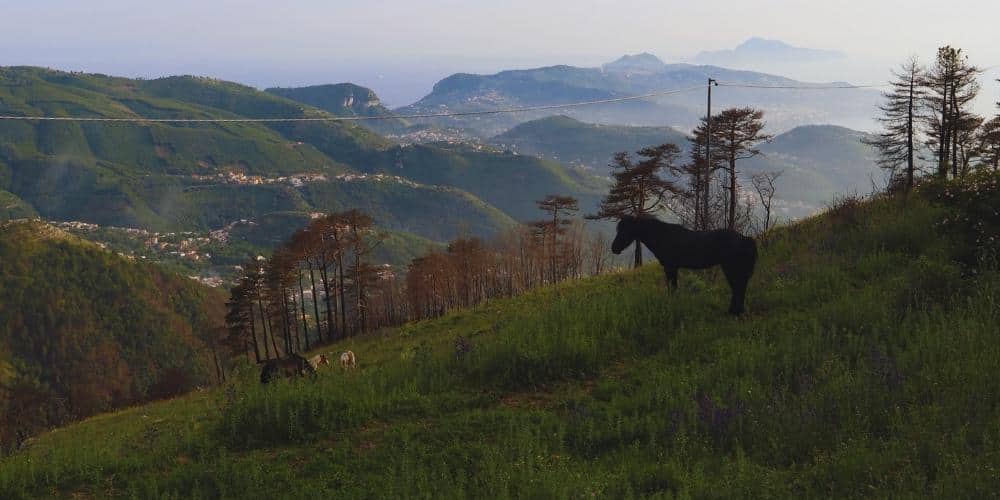
Suppose you aim to organise a family-friendly holiday that involves and entertains even the youngest children. In that case, here is some hint for activities that please everyone in the Sorrento Peninsula. Beaches, hills, mountains and spas are all within easy reach, and you can choose thrilling nature trails to walk according to your abilities.
Churches and historic buildings speak of art and beauty, and the many museums will answer your curiosity. The Museo Mineralogico Campano in Vico Equense, with thousands of minerals, ancient fossils and reconstructions of dinosaurs, is a must-see that will interest even the youngest visitors.
There are also fun workshops for children to learn how to make pizza, and after putting your hands in the dough, go up high and conquer the highest peak in the Lattari Mountains. In half an hour's drive from Sorrento, you can reach Castellammare di Stabia: take the cable car and in a few minutes of an exciting ride suspended in the blue you will be on Mount Faito. Sort out a picnic in the woods, stroll among centuries-old beech trees and, who knows, you'll even spot some wild horse.
Treks and hikes in the Sorrento Peninsula
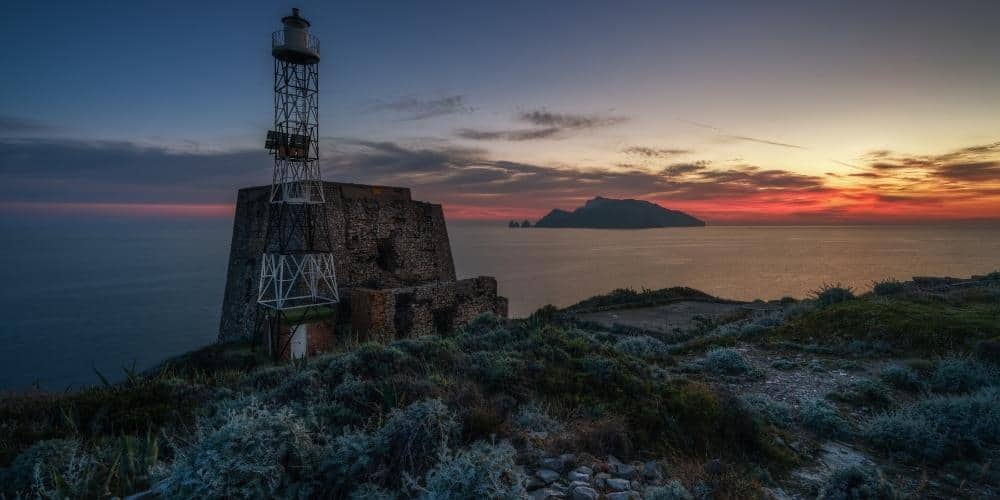
Treks in the woods and paths with "an infinite view" are sprinting alternatives to beach life and city activities. Suggestions for those who look for dynamic itineraries between art and nature range from mountain trails to footpaths by the sea.
Following the ancient Roman Via Minerva, the sentiero of Punta Campanella leads to the most extreme part of the Sorrento Peninsula, with its lighthouse and medieval watchtower. The scent of citrus fruits and the splendid view of Capri are there to keep you company. From Nerano, there is a lovely path leading to the Bay of Ieranto, one of the most beautiful beaches to stop.
Fancy some high-altitude trek? On Mount Faito, there is an 8-kilometre ring route at 1,000 metres high, starting from the Faito cable car. Through beech woods and natural springs, you will reach a postcard-perfect spot that embraces the Gulf of Naples, the Amalfi and Sorrento coasts, Vesuvius, the Alburni and Punta Licosa.
Many itineraries to Mount Faito start from Vico Equense. In this case, the ideal departure point is from Piazzale dei Capi. You can continue towards the Sanctuary of San Michele, at an altitude of more than 1,200 metres, or to Monte Cerasuolo or Conocchia, which is also practicable for disabled people and those travelling with prams.
Walking through stately beechwoods, you'll come across the so-called fosse della neve (snow pits), holes in the ground that stored the snow used to make drinks during summer. Another path leads to the Grotta dell'Acqua Santa, where a rare carnivorous plant grows, a living fossil that survived the Ice Age.
About the author
Written on 01/02/2022


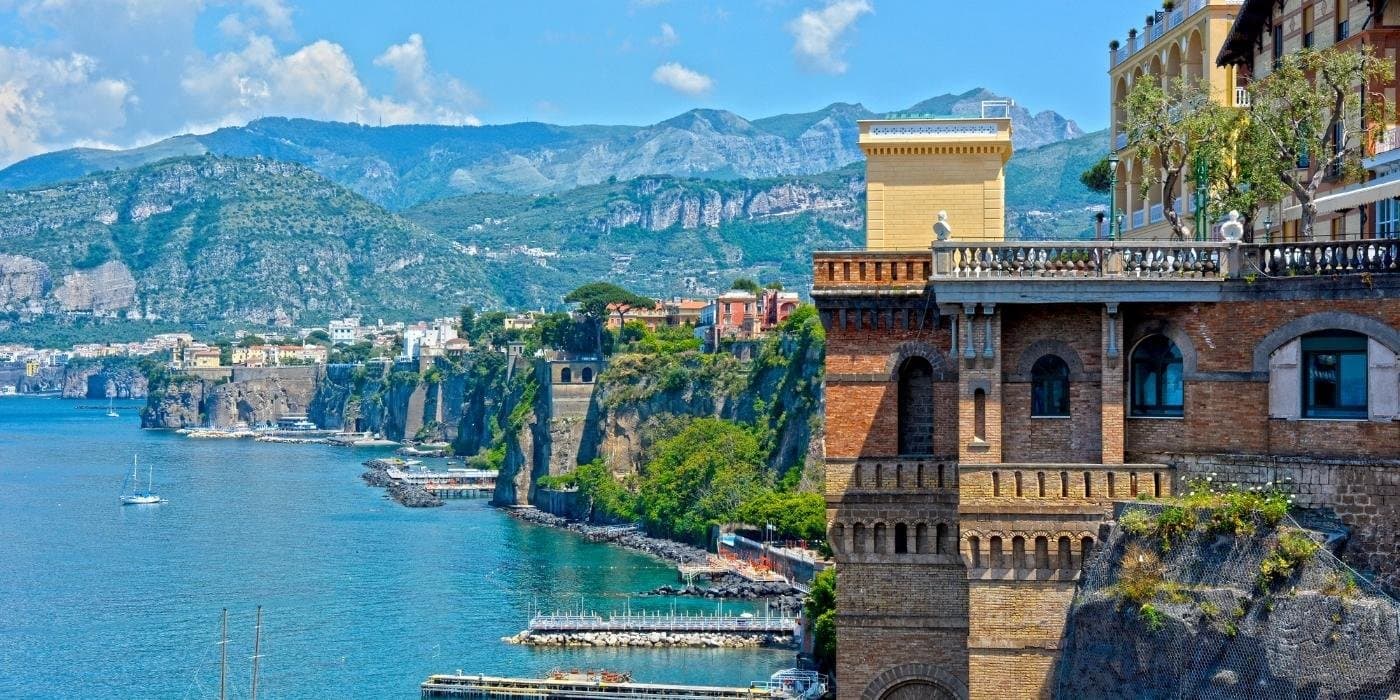
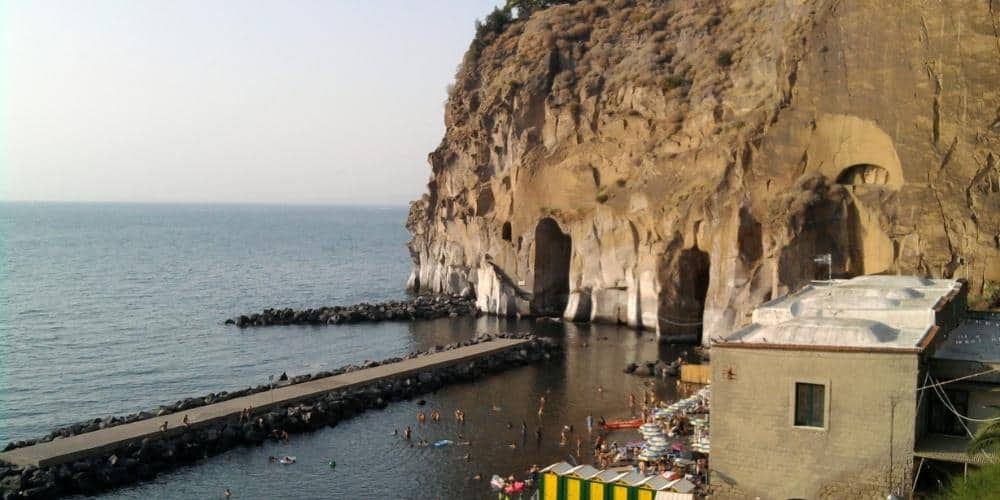
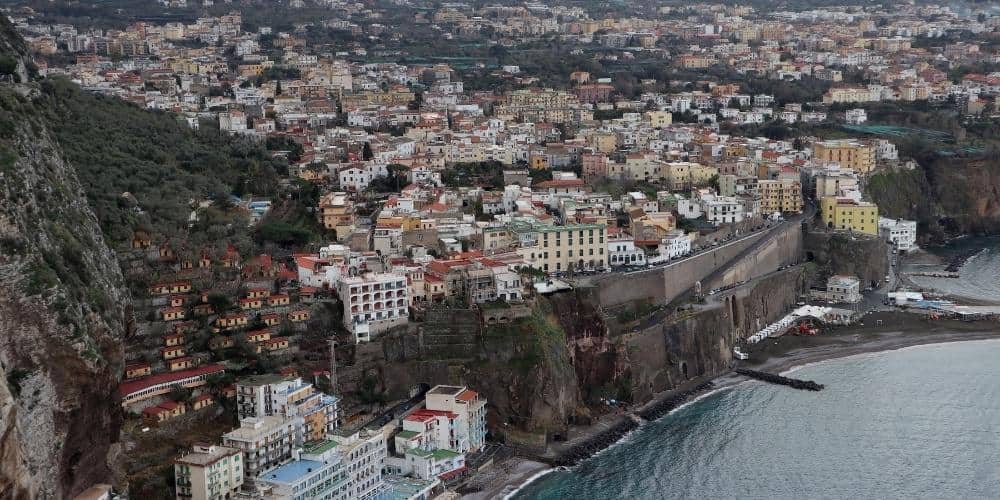

Lorena Calise
Everything you always wanted to know about the Sorrento Peninsula but were afraid to ask. The guide to read before your trip.